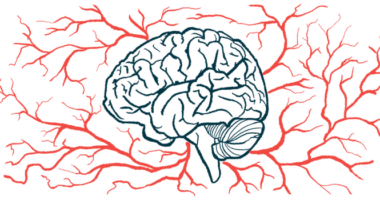‘Sickle Cell Speaks’ Campaign Raises Awareness with Aim of Eroding Stigmas, GBT and Partners Say

In partnership with community organizations, Global Blood Therapeutics (GBT) is directing a national campaign to raising awareness and understanding of sickle cell disease, including among health professionals focused largely on pain crises, with the goal improving patient care.
Called Sickle Cell Speaks, the campaign highlights diverse stories told by patients, caregivers, friends, and family to educate others, and to help eradicate disease stigmas.
“The sickle cell experience is highly varied, and highlighting the personal stories of these individuals, as well as their family and friends, will help grow understanding and awareness of this condition,” Beverly Francis-Gibson, president and chief executive officer of the Sickle Cell Disease Association of America, said in a news release. “We are proud to partner with GBT to help break down stigmas and make our voices heard.”
SCD patients can experience stigma bias for a variety of reasons, including race, disease status, socioeconomic status, delayed growth and puberty, and the acute pain that often to be managed by prescription opioids, a 2018 article in the peer-reviewed journal Issues in Mental Health Nursing reported.
“Despite SCD being a genetic disease, it is impacted by racism and healthcare equity issues, including hindered access to care, and less funding support,” the article said.
“We are partnering with several CBOs [community-based organizations] representing the sickle cell community to educate people about SCD and to help break down barriers — particularly the misconceptions and social stigmas — that affect how those with SCD are viewed by society and which ultimately impact patients’ ability to access quality care,” said Ted W. Love, MD, GBT president and chief executive officer.
Sickle Cell Speaks collaborators include the Sickle Cell Community Consortium, Sickle Cell 101, Bold Lips for Sickle Cell, and Sickle Cell Warriors.
Among those telling their story is Julian, a college-bound high school senior who largely prefers to keep his disease private.
“I don’t really present myself as in pain whenever I’m having a pain crisis,” he said. “If I’m out in public, I keep it to myself. I just wait until I get home so I can deal with it. … I don’t really let anyone know because a lot of the time people don’t know how to help me, and if I’m in pain I get aggravated very easily.”
The campaign’s website also includes disease information, events, a listing of patient support groups, and a specialist directory.
A related effort by GBT, called SCD Silent Damage, aims to call physician attention to hemoglobin S polymerization, the disease’s molecular basis. Sickle cell anemia is caused by a mutation in the HBB gene. This gene provides the instruction to make a component of hemoglobin, the protein inside red blood cells that carries oxygen. The mutated hemoglobin polymerizes — sticks together — forming rigid fibers resulting in deformed red blood cells that can’t easily pass through blood vessels.
Independent of the vaso-occlusive crises more commonly associated with the disease, polymerization drives the destruction of red blood cells and ensuing anemia, which can result in organ damage. While it can go unrecognized, organ damage is a chief cause of morbidity and mortality in SCD, the biopharmaceutical company states on a webpage devoted to disease complications.
“Together, our patient and physician campaigns underscore GBT’s commitment to bringing together a broad range of stakeholders, with the goal of improving the lives of people living with sickle cell,” Love said.
SCD affects roughly 100,000 people in the United States, according to the Centers for Disease Control and Prevention. It occurs in about 1 in every 365 African-American births.






